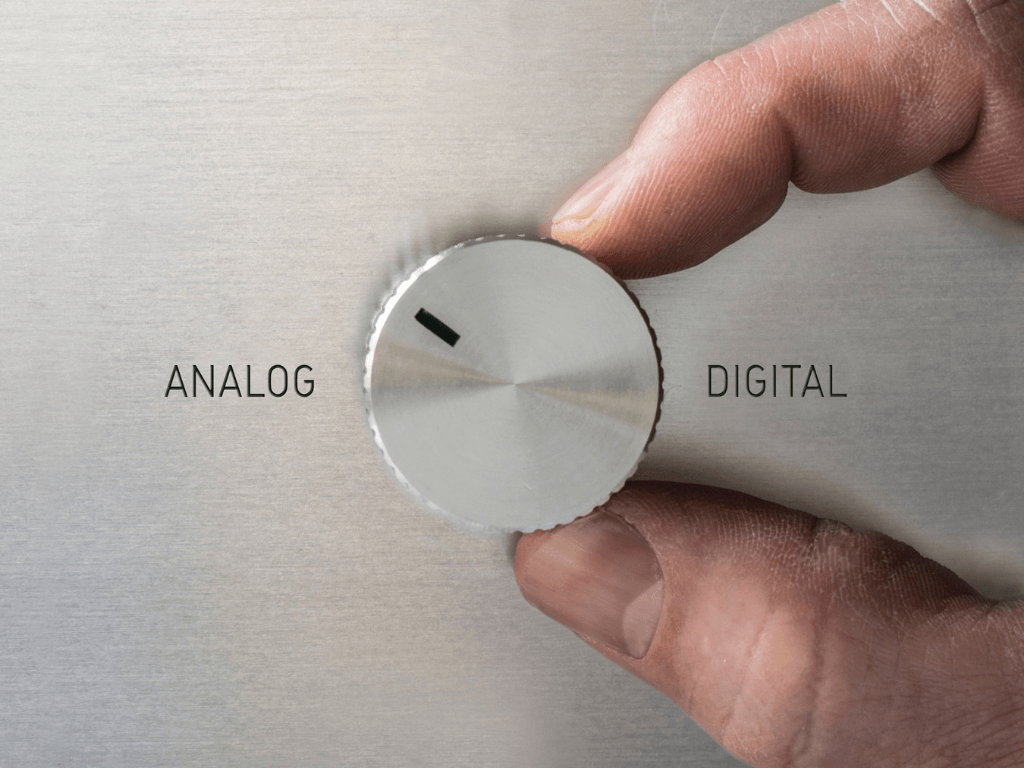In an era where digital technology reigns supreme, it’s easy to overlook the enduring significance of the roots that anchor us in the tangible and the timeless. As we navigate through the waves of the Fourth Industrial Revolution, with its digital twins, AI, and the IoT transforming every corner of our industries and personal lives, a question lingers in the air: What place does analog technology hold in our increasingly digital world?
Despite the rapid digitalization that has characterized the past few decades, analog technology has not only remained relevant but has also maintained its essential significance. From the warmth of vinyl records to the tactile feedback of mechanical watches, analog technologies offer a richness of experience that their digital counterparts attempt to emulate but cannot fully capture. This combination of physicality and functionality speaks to something fundamentally human—an appreciation for the tangible and the authentic. Notably, in the world of music, vinyl records stand out not just for their nostalgic value but also for how they are used by DJs to create innovative musical experiences by blending them with digital technologies. DJs mix the warmth and tactile experience of analog with the flexibility and innovation provided by digital technology, elevating music to a new dimension. This is just one example of how analog and digital technologies can coexist and create a powerful synergy.
My recent exploration of the analog world through Irene Vallejo’s “Papyrus” and Caroline Weaver’s “The Pencil Perfect” has rekindled an appreciation for the enduring legacy of analog devices and technology. These readings not only enriched my understanding but also illuminated the intricate interplay between the analog and digital realms.
“Papyrus” unravels the history of the written word and its profound impact on human civilization, reminding us of the tangible legacy of knowledge and culture. Vallejo’s exploration into the ancient world of scrolls and manuscripts underscores the physicality of communication, an aspect that digitalization tends to overshadow.
In parallel, “The Pencil Perfect” by Caroline Weaver delves into the humble pencil’s journey, a quintessential analog tool, highlighting its unassuming yet pivotal role in creativity and innovation. Weaver’s narrative brings to light how simple analog tools like the pencil continue to shape ideas and seamlessly bridge the gap between the tangible and the digital.
This newfound perspective was a revelation. In recent years, my immersion in digital learning and discourse inadvertently led me to overlook the analog foundation that underpins our digital advancements. The realization struck that the digital world is not a replacement but rather an extension of the analog. Each enhances and depends on the other for depth, context, and innovation.
This reflection serves as an invitation to explore the symbiotic relationship between analog and digital technologies more deeply. How do these realms coexist, complement, and mutually influence our experiences and understanding of the world?
As we continue to forge ahead in the digital age, let us not overlook the analog roots that connect us to a rich heritage of knowledge, creativity, and human interaction. The tactile pleasure of turning the pages of a book, the immediacy of jotting down a thought with pencil on paper, are experiences that digital technology seeks to emulate but cannot wholly replicate. In the years ahead, it’s crucial that we deepen our understanding of how manual and digital tasks differently impact neurological functions.
In our quest to embrace the future, we should not forget the lessons and legacies of the past. Analog technologies, with their tactile richness and human-centric design, remind us that progress isn’t solely about speed or efficiency but also about depth and texture in our daily experiences.
Let’s engage in a conversation about the significant role of analog technology in our increasingly digital world. By acknowledging and valuing our analog past, we pave the way for a more integrated, meaningful future where digital and analog technologies enrich our lives in concert.
This note is not only a reflection but also a call to action for deeper appreciation and exploration of the analog underpinnings in our digital lives. It aims to spark dialogue, inspire further exploration, and cultivate a deeper appreciation for the interplay between analog and digital, thereby enhancing our experiences and enriching our understanding of the world around us.







No Comments